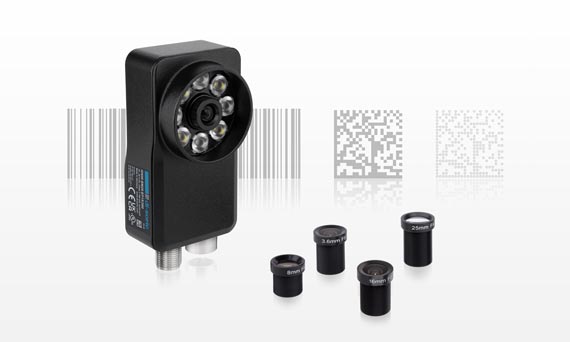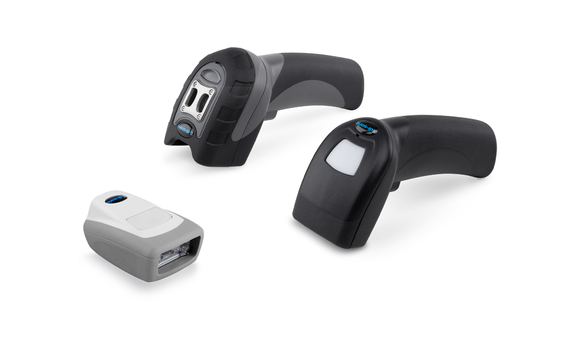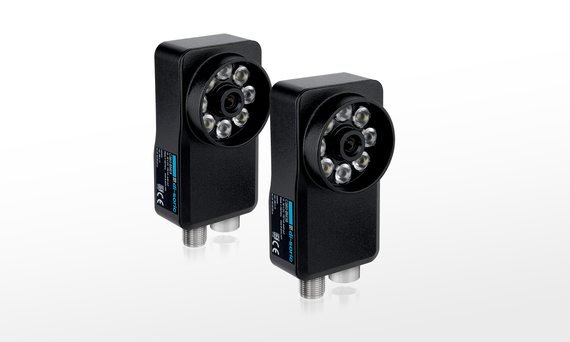

Identification
Code reading in factory automation
Identification systems for modern, automatic
conveyor and production systems.
The essential characteristic of new production concepts is linking the information flow with the material flow. This enables the identification of the conveyor units at any time and at any location, ensuring versatile control at each production step.
Localization, counting and capture of 1D and 2D codes
A prerequisite is the reliable recognition of all common 1D and 2D codes by identification systems, such as our high-performance fixed-mounted and handheld ID readers and vision sensors.
Common 1D and 2D codes
Code 39

Code 128

1D or bar codes
- Vertical arrangement of information
- Lines/Spaces in between are measured and converted into the information contained therein
- Extra wide distribution of codes
- ‘Print growth’ is very critical for readability
- A lack of correction options makes checks difficult
- Can be read using camera- or laser-based methods
Examples:
Code 39

Code 128

Code 2 of 5 Interleaved


Code UPC

Code UPC

EAN-Code

EAN-Code

PDF 417

Aztec
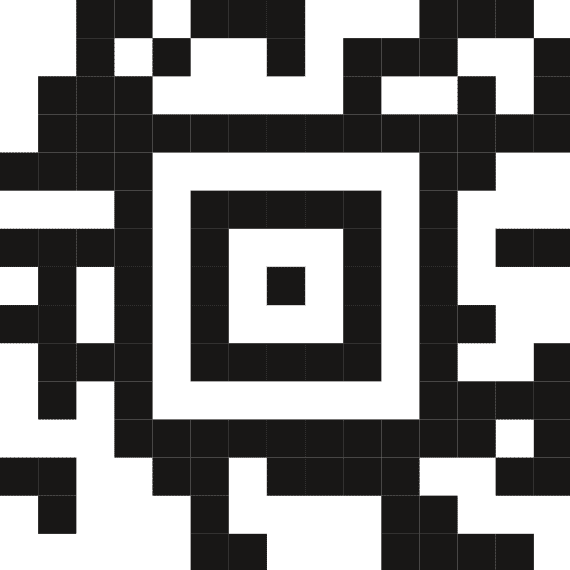
QR-Code
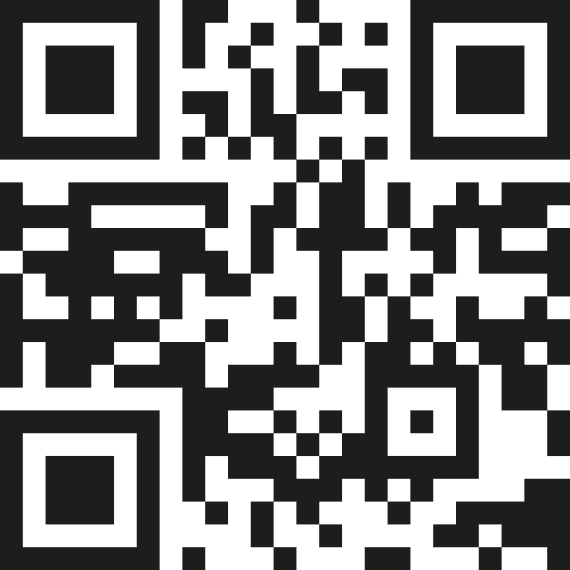
2D or stacked barcodes
Barcodes
- Error correction to stabilize the readability in case of damage
- Can be read using camera- or laser-based methods
- Requires a very high print quality
Matrix code
- Standard from Nippon Denso
- 4 selectable levels of error correction
- Makes reconstruction possible for 7% - 30% damage
Beispiele:
PDF 417

QR-Code

Aztec

Data Matrix Code – Label / DPM
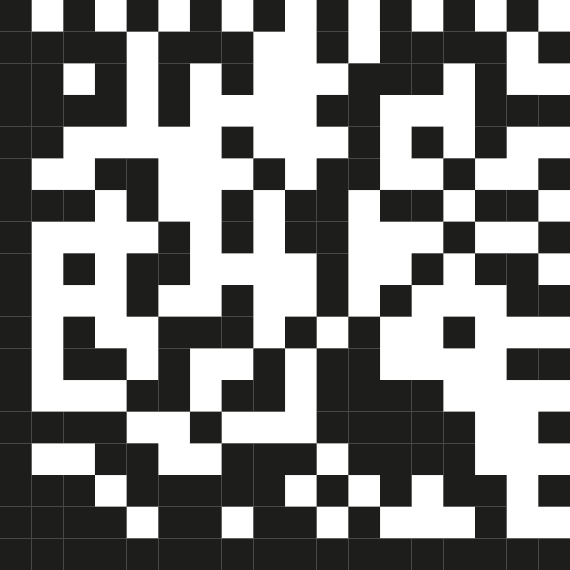
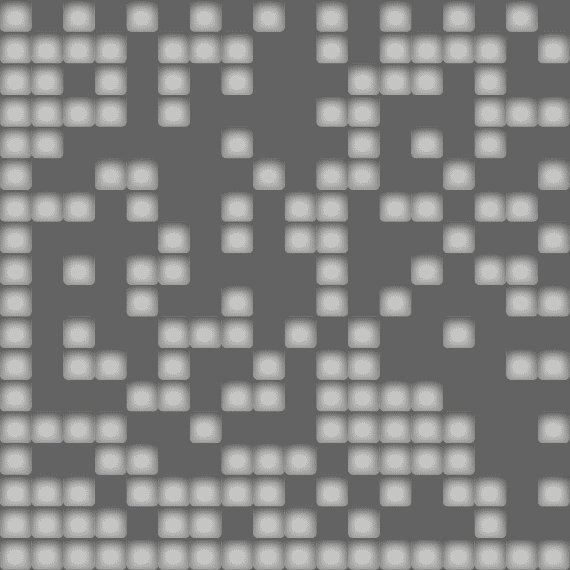
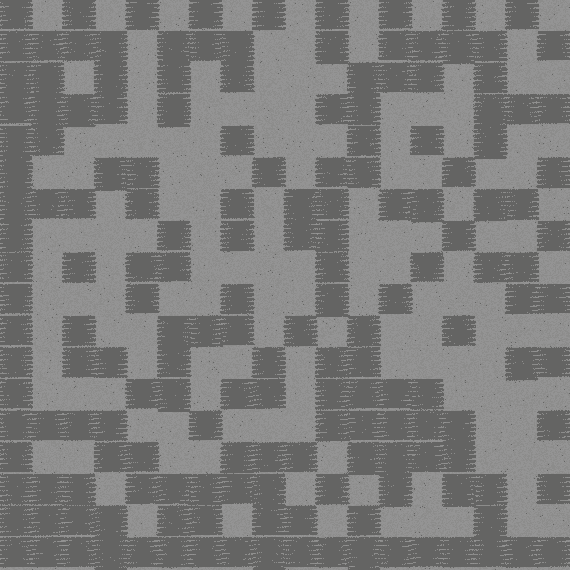
Data Matrix Code – DPM
- The standard for product tracing
- DPM: With Direct Part Marking, the code is added directly to the product without a label, e.g. needle-embossed, etched or laser-engraved – which also increases counterfeit protection.
Beispiele:
Data Matrix

Data Matrix DPM

Data Matrix DPM

The advantages of camera-based code capture
Camera-based code readers – unlike laser scanners – use an area sensor to capture images of 1D and 2D codes.
As a result, they are capable of detecting not only bar codes, but also data matrix, QR, maxi, miniature or even directly marked codes. Even dirty, damaged or incomplete 1D and 2D codes can still be read with a high probability of success. In addition to the data from the captured codes, the ID readers can transmit live images for documentation and subsequent analysis.
Multitalented identification
The variety of objects, materials, code types, and ambient conditions that code readers have to cope with is increasing. This makes the use of versatile code readers all the more important and sustainable:
For hard-to-read
codes
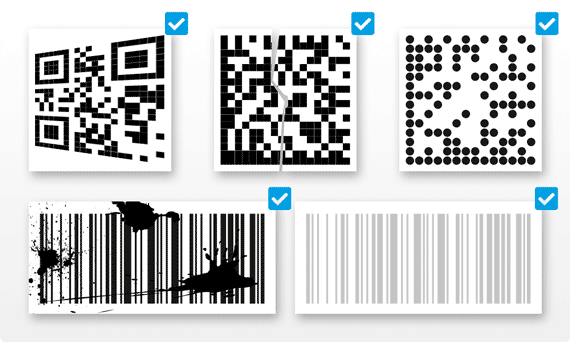
Worn, dirty, partially obscured or damaged codes can cause problems. Powerful code readers are capable of identifying even difficult-to-read or incomplete codes. This avoids incorrect allocations and malfunctions during operation.
For hard-to-identify
direct markings
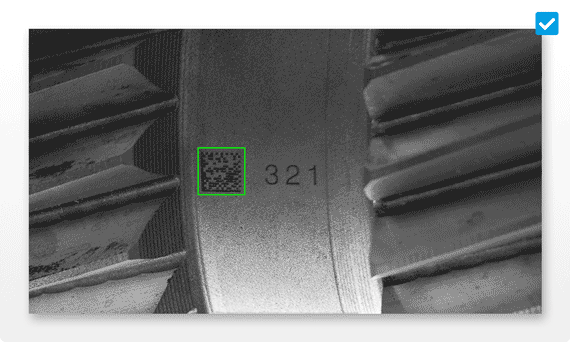
Codes applied directly to surfaces are often small, get dirty easily and can reflect on metallic components. DPM algorithms optimized for this detection are capable of correctly reading even codes that are difficult to recognize. Lighting matched to the application, e.g. spotlighting when reading needle-engraved codes (DPM), leads to reliable code detection.
For reflective and
mirror materials
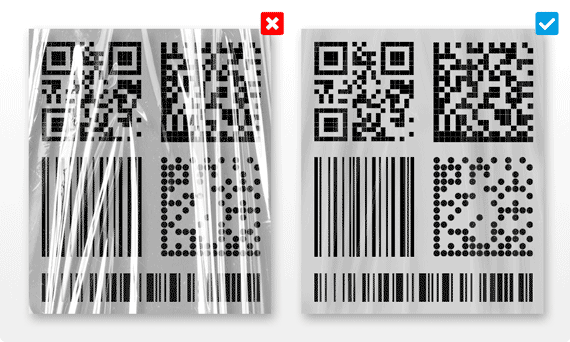
To prevent interfering reflections – e.g. on foils or metal parts – from hampering code detection, two solutions are available for stationary, camera-based code readers: Polarizing filters that reduce reflections and dome lights with matching fixtures that evenly illuminate the area to be captured.
For colored codes
and backgrounds
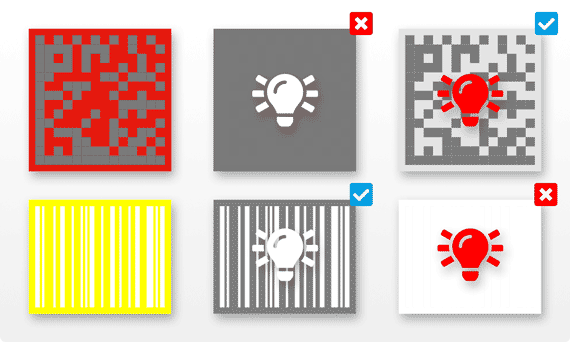
Especially with low contrast differences, different lighting colors, e.g. white and red, as with our ID-600 and CS-60, increase the quality of the captured images.
This allows colored codes or codes on colored backgrounds to be reliably identified.
For simultaneous detection
of multiple codes
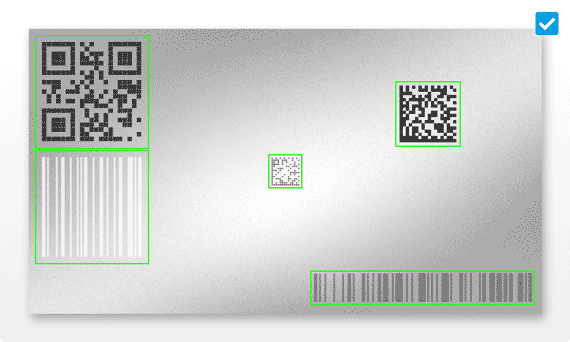
In order to be able to reliably read several codes in the field of view at the same time, certain parameters can be set for each code. Our nVision-i software also recognizes multiple codes automatically – without presetting code details such as symbology, size and position. In addition, it can optimize the image quality in the peripheral area through image correction.
Track and Trace – Traceability is indispensable today
The need for reliable identification solutions for transparent control and tracking of material flow is present across all industries. Processes must remain flexible at high speeds and fast cycle rates. This is where camera-based code readers excel with their versatility and meet the requirements for fast, efficient and reliable processes in a wide range of industries.
Automotive industry
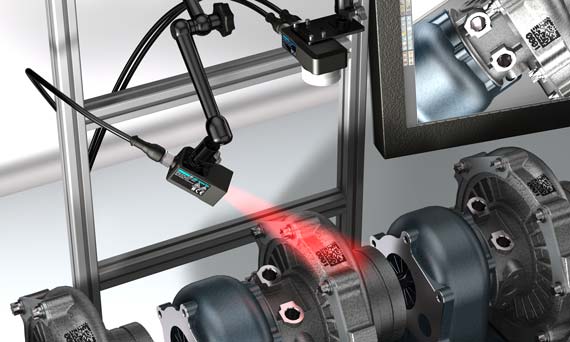
In the automotive industry, directly marked codes are crucial. Components must be consistently traceable and as tamper-proof as possible. ID readers with powerful DPM algorithms ensure reliable detection and documentation here – even in the presence of soiling and reflections.
Consumer Goods Industry
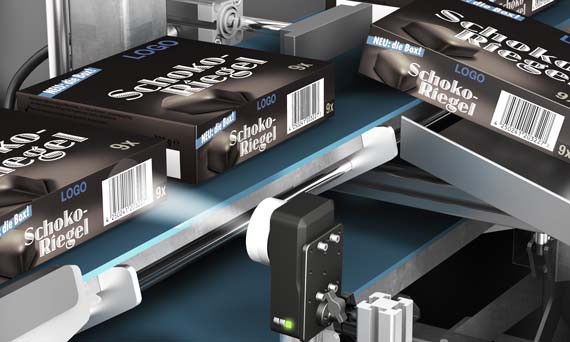
The food and pharmaceutical industries have stringent requirements for transparency and productivity. These can be met particularly efficiently with camera-based code readers – reliable traceability is achieved even at high speeds and fast cycle times.
Electronic
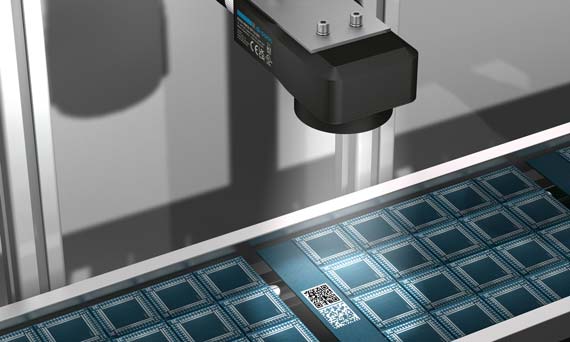
For capturing the smallest, most varied codes – e.g. data matrix codes on printed circuit boards or directly marked codes on components – camera-based code readers are the first choice for applications such as parts tracking and quality assurance due to their versatility.
Versatile solutions for the most important application areas
Most industries have three primary application areas:
Stationary identification:
Fixed-mounted ID readers
Fields of application
- When tracing components, where also directly marked codes are used and not only the decoded data but also the created images have to be transferred (via FTP/SFTP) for quality control of the codes
- In areas where flexibility and configurability are required for fast changeovers
Code reading
- in part feeding, assembly and handling technology, secondary packaging, etc.
- from very small codes / codes with little contrast
- under demanding lighting conditions
- in wash-active factory environments
Mobile identification:
Handheld ID readers
Fields of application
- From basic capture of 1D / 2D codes under less demanding conditions to the
- Tracking of components in harsh and contamination-prone environments where direct-marked codes are used in particular, e.g. on assembly lines and in other manufacturing applications
Code reading
- in the goods receiving department
- during storage
- during commissioning
- in the outgoing goods department
- in assembly / production
Stationary detection, inspection, identification:
Vision sensors
Fields of application
- When tracing components, where also directly marked codes are used and not only the decoded data but also the created images have to be transferred (via FTP/SFTP) for quality control of the codes
- In areas where flexibility and configurability are required for fast changeovers and other tasks need to be performed
Code reading
- in part feeding, assembly and handling technology, secondary packaging, etc.
- from very small codes / codes with little contrast
- under demanding lighting conditions
- in wash-active factory environments


